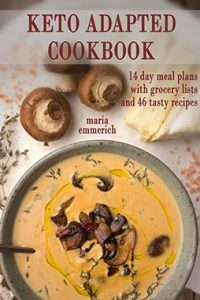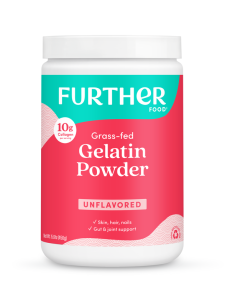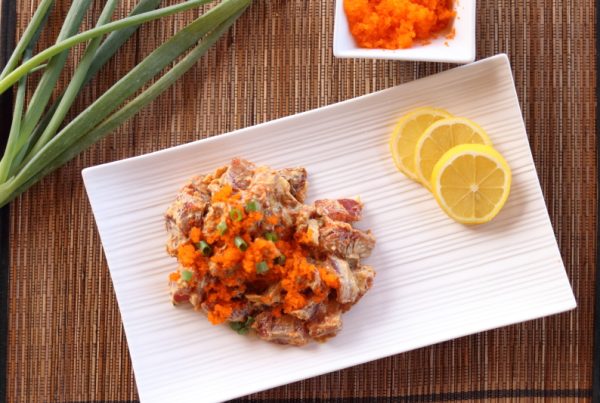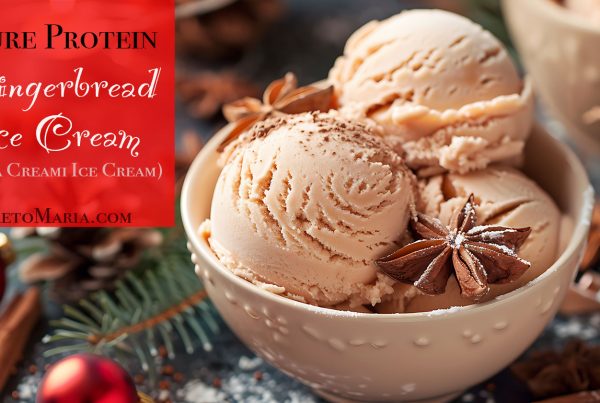Testimony of the Day
“Hi Maria! I just wanted to show you a quick update after being on your diet for 5 days!! I’ve attached a before and after picture. My itchy, rashy legs have always looked their worse when I’m in a bath or shower; they are always there, but something about the hot water would make them very red and more noticeable than they already were. The “before” picture is how my legs would look while bathing for the last 3 or so years. I was so happy to take a bath tonight and realize they are almost all gone! I just wanted to thank you again for saving my skin!” Malorie
To get started on your path to health and healing, click HERE.
LOW CARB AND ENERGY
Energy Can Come From:
1. Glucose: created with carbohydrates and protein
2. Fats, both from the diet and from stored body fats
3. Ketones which are derived from the metabolism of fats
KETONES and ENERGY = EAT HEALTHY FATS
If you want to stop being a “sugar burner” you must derive energy from another source. Enter fat. When we start eating a healthy low carb diet, our bodies slowly switch from burning sugar to burning fat. This is where eating becomes an “art.” Energy must be derived from healthy fatty acids and ketones produced from foods such as coconut oil. At first the body will feel lethargic due to the mechanisms switching over; burning sugar is easy, burning fat takes a few days to adapt.
The brain prefers to use ketones instead of glucose for energy (in Alzheimer’s the brain can no longer convert glucose for energy, coconut oil is VERY healthy for these patients!).
Eating a very low carbohydrate diet stimulates the production of ketones from body fat; which is why people lose so much weight on this diet. Cutting out carbs and reducing protein also leads to a lower insulin level in the blood. A normal blood sugar is 1 TEASPOON of sugar in you blood. Many Americans consume over 63 teaspoons a day! If you can conquer a normal blood sugar, it reduces the problems associated with high insulin levels; insulin resistance, leptin resistance, high blood pressure, Metabolic Syndrome, weight gain, sleep issues…
To produce ketones, focus on carbs being only 5% of your total intake. For diabetics, the level may need to be lower to counteract insulin resistance. Typical levels of carb intake for a type-2 diabetic are around 30 grams per day or less; the level should be lower still at about 20 grams a day or less for a type-1 diabetic. Here is a good ratio to follow for calories/macro-nutrient consumption:
5% carbs
10-20% protein
70-80% fat
Don’t eat just lean proteins! It is not tolerated well in our body. It leads to nausea in as little as three days. A high healthy fat diet, however, is the traditional diet to sustain for a lifetime. Eating only lean protein causes excess intake of nitrogen, which leads to hyperammonaemia, which is a build up of ammonia in the bloodstream and is toxic to the brain. Many traditional societies survived on a purely animal product diet, which was naturally high in fat…they didn’t have George Foreman Grills.
Our paleo ancestors actually consumed more fat than protein; with a ratio of about 80% calories from fat and 20% from protein. During prolonged periods of starvation or something such as marathon running, fatty acids are converted into ketones, the preferred energy source for highly active tissues like those found in the heart and muscles. Ketones provide a long lasting energy to all cells with mitochondria. Ketones are used to generate ATP. If you use glucose for energy, it needs the intervention of bacteria, ketones can be used directly.
*Note: Using a quality REAL salt is also essential for electrolyte balance. We start skipping the salt and we get low energy. I’m not talking about pre-packaged and fast food junk salt. A Celtic Sea Salt filled with minerals will help with energy.
My favorite electrolyte product for athletes is ENDUROLYTES FIZZ. Click HERE to find.
The healthiest more energizing fats come from animal sources. Quality animal sources like free-range egg yolks and grass fed beef!

“Healthified” Chili Cheese Fries
CHILI:
2 pounds grass-fed ground beef
1 pound Italian sausage
2 (28 oz.) cans diced tomatoes with juice
1 (6 oz.) can tomato paste
1 large yellow onion, chopped
3 stalks celery, chopped
1 green bell pepper chopped
1 red bell pepper chopped
2 green chilies chopped
4 pieces bacon (fried, drained and chopped)
1 cup beef broth
¼ cup chili powder
1 TBS minced garlic
1 TBS dried oregano
2 tsp ground cumin
2 tsp hot pepper sauce
1 tsp dried basil
1 tsp Celtic salt and pepper
1 tsp cayenne pepper
1 tsp paprika
1 tsp stevia glycerite
FRIES:
2 heads of cauliflower stems
1 tsp Celtic sea salt
1 tsp chili powder
OPTIONAL: Top with “Healthified” CHEESE SAUCE OR 1 (8 oz.) block Cheddar cheese, shredded
CHILI: Heat a large stockpot over medium-high heat. Crumble the ground chuck and sausage into the hot pan, and cook until evenly browned. Drain off excess grease. Pour in the diced tomatoes and tomato paste. Add the onion, celery, green and red bell peppers, chili peppers, bacon, and beef broth. Season with chili powder, garlic, oregano, cumin, hot pepper sauce, basil, salt, pepper, cayenne, paprika, and stevia. Stir to blend, then cover and simmer over low heat for at least 2 hours, stirring occasionally. After 2 hours, taste, and adjust salt, pepper, and chili powder if necessary. The longer the chili simmers, the better it will taste. Remove from heat and serve, or refrigerate, and serve the next day. Makes 12 servings.

FRIES: Preheat the oven to 425 degrees F. Cut the stem out of the cauliflower (you can also use the whole cauliflower if you want, but it won’t look like “french fries”). Cut the stem into french fry shapes. Place on a greased cookie sheet. Spray the ‘fries’ with coconut oil spray and sprinkle with chili powder and salt. Bake for 25 minutes or until golden brown. Remove from the oven. Spoon chili over fries and top with cheese.
NUTRITIONAL COMPARISON (per serving)
Traditional Chili Fries = 411 calories, 17g fat, 8g protein, 52g carbs, 5g fiber
“Healthified” Chili Fries = 432 calories, 27g fat, 33g protein, 14g carbs, 5g fiber (57% fat, 30% protein, 13% carbs)
“Healthified” Chili = 421 calories, 27g fat, 33g protein, 11g carbs, 4g fiber (58% fat, 31% protein, 10% carbs)
VARIATION: You can also use my other “French Fry” ideas, such as Eggplant Fries found in my cookbook: Nutritious and Delicious
To read more check out: Fat is the most valuable food known to Man PROFESSOR JOHN YUDKIN
 |
| More “kid friendly” ideas in The Art of Healthy Eating: Kids |
















Love this! Thank you for always explaining food and their interaction with our body! You rock!
You are welcome! Thank you for your kind words!!!
This sounds yummy…………
When speaking of carbohydrates, are you factoring the carbs in non-starchy vegetables into your 10%? I eat a huge amount of non-starchy veg (cabbage, peppers, mushrooms, zucchini predominantly) – in the quantities I eat, those carbs add up. I’m interested in your thoughts – thank you!
Yep, I count those too;) but you can subtract the fiber.
Happy eating!
Wonderful recipe! I can’t wait to try it. I adore the idea of the cauliflower fries 🙂 What a versatile vegetable. What is the “stevia glycerite” Do you know what it is equal to in real sugar… not that I’m using real sugar, but my stevia extract powder says so much of it equals so much regular sugar. Just want to get my conversions right so I don’t end up making dessert 🙂
Thanks girl! Stevia glycerite is just a non-bitter form of Stevia. I would slowly add in the Stevia and taste it;)
Let me know if you try it!
Great Post! When I started eating low carb, I had loads of energy and I was eating a lot of fat. My husband kept saying you’re eating a lot of fat, but I just ignored him, and kept eating all that fat. Then a few months later when my cholesterol readings had been completed and the numbers showed radical movement downwards, he started following my way of eating too. In your piece, you mention sleep issues. Are sleep issues associated with high sugar intake? As for your recipe, I love the idea of using cauliflower stalks for french fry substitute, what a perfect idea! Can I brush them with coconut oil instead of the spray? The spray is kind of expensive where I live, and I think it also contains canola oil in the ingredients.
Thanks!
Yes, when you eat a high carb meal before bed, blood sugar rises… And what goes up crashes down causing you to wake up and need food!
Too many carbs also change our serotonin levels and that directly impacts our production of melatonin. I write a lot about it in my book: Secrets to Controlling Your Cravings Weight and Mood.
Great as always. Question – I have everything BUT cauliflower as I just cooked it. And I was planning on making something with the ground. Can turnip work as the fries? I usually shred turnip for my ‘hashbrowns’. But I wondered if chopping and brushing with coconut oil will be the same or is the taste of cauliflower better?
Thanks again!
Oh yes! Turnips would work too!
I’m a little surprised that you said T1 diabetics should eat less than 30g carbs a day, and yet said that carbs should be 10-15% of our daily calorie intake. That doesn’t seem to match up. Also, as a T1 myself, 30g is not only impractical, but also just not true. Eating so few carbs does not provide the energy we need. I stick to 60-75 carbs max per meal, and eat very healthily. My blood sugars are almost perfectly controlled and my A1C is 5.6 (completely normal). Good thoughts on sugars and fats overall, but be careful with your carb suggestions, especially for diabetics. We still need our carbs too!
Look up Dr Richard Bernstein. He is a type 1 diabetic himself and in very good health. He has a you tube series and has written several books. He went to medical school to try to change the traditional thinking on diabetes after he made changes for himself and found it reversed many of the complications he was suffering.
How do you do this?!?! I went and finally got all the ingredients for these recipes and this is one I’m making tomorrow for our family dinner. I can’t wait!
Thanks Denise! I know you will live them;)))
Hi Maria,
Just wondering if you’ve read this article by Mark Sisson. He addresses the whole how many calories muscles actually burn at rest topic. http://www.marksdailyapple.com/how-many-calories-does-muscle-really-burn-and-why-its-not-about-calories-anyway/#axzz1l04eq72G
Looks delicious!! I replace turnips for potatoes for better carbs, I think I will try those in this recipe as well as the cauliflower.
Can I make this in the CrockPot? If so, how would I need to adapt it? Simmering for two hours isn’t really practical for me, but I could dump it in the CrockPot before class.
Hmm, the chili would work (just brown meat and add it with everything else to slow cooker on low). The fries might but would probably work better in the oven. 😉
Maria, is the calorie count for your *cauliflower chili fries* really 396 calories for 1 serving?
The coconut spray , salt and chili powder could not add that many calories! The cauliflower is low in calories! It must be a mistake! Thank you already for your response!
The chili and cheese add to the calories too. 🙂
Hi Maria I was wondering if rutabaga would work for the fries?
It will have a bit stronger flavor, but it would work. 🙂
This is my favorite chili recipe in the whole world! I was wondering what the protein/carb/fat breakdown is for just 1 cup of the chili without the cauliflower fries?
Thank you!
I added it above. Thanks!
Maria, I use Patty Pan Squash as my French Fries…it’s amazing too!
I bake turnip fries in the oven. I toss with olive oil, a little sea salt and bake on cookie sheet and they are so good with your chili.
Thanks!
What’s the carb count etc for fries only without chili cheese? Trying to do your rapid weight loss with under 6 carbs daily, but this would be heaven right now!!! Thanks
Not sure. Sorry
Maria, love your recipes as we are trying to follow low carb diets. An elderly cook told me the secret to his award winning chili was 1 tsp of good cinnamon and a few grates of dark chocolate
Great idea!